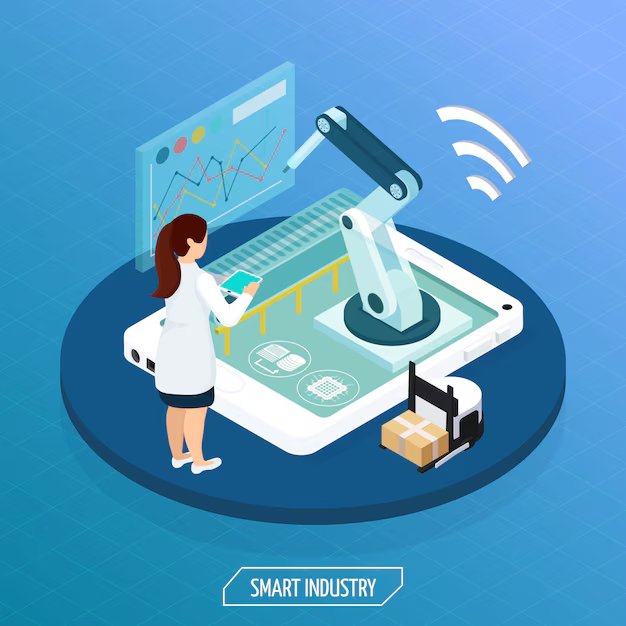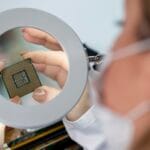Digital health devices have revolutionized healthcare by empowering individuals and professionals to monitor and manage health more efficiently. From wearables that track fitness metrics to diagnostic devices that provide critical health information, these devices are now central to personalized healthcare solutions. As the demand for such devices grows, ensuring their accuracy becomes paramount. Inaccurate readings from health devices can lead to misdiagnoses, improper treatments, and a loss of trust from patients and healthcare providers.
Test & Measurement plays a crucial role in ensuring that digital health devices deliver precise and reliable data. Through rigorous testing, these devices are validated to meet the high standards required for patient safety, regulatory compliance, and performance under real-world conditions. This blog explores the critical role of Test & Measurement in guaranteeing the accuracy of digital health devices, examining various techniques, challenges, and emerging technologies shaping the future of health device testing.
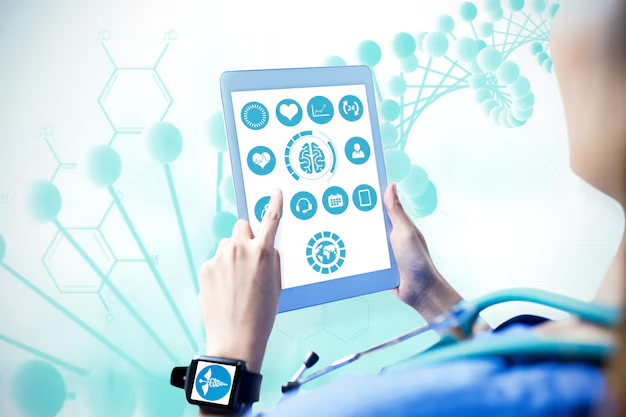
Key Test & Measurement Techniques in Digital Health Devices
Ensuring the accuracy of digital health devices involves a combination of specialized Test & Measurement (T&M) techniques designed to validate performance and ensure reliability under various conditions. Below are the key testing methodologies used in digital health device validation:
1. Calibration and Validation
- Calibration is the process of adjusting a device to ensure its measurements align with a known standard or reference. For digital health devices, accurate calibration is crucial, as even small deviations in readings can have significant consequences on diagnosis and treatment.
- Validation involves testing the device against benchmarks to confirm its accuracy in measuring the intended health parameters. Devices like blood glucose meters or ECG machines must be validated through comparisons with clinical standards or gold-standard devices to ensure reliability.
- Example: A glucose meter must be calibrated to ensure it accurately reflects blood sugar levels, which is essential for diabetic patients managing their condition.
2. Performance Testing
- Performance testing evaluates how well a device functions under various conditions. For digital health devices, this includes assessing their accuracy, responsiveness, and reliability in different environments such as varying temperatures, humidity levels, or altitudes.
- The device’s ability to maintain accurate readings while in motion (for wearables) or when exposed to external factors (such as interference from other electronic devices) is also a key focus of performance testing.
- Example: Wearables like smartwatches must be tested for heart rate accuracy when a person is engaging in different activities, such as running, sleeping, or during high-stress moments.
3. Signal Integrity Testing
- Signal integrity testing ensures that the data transmitted from the device’s sensors to its processor or the cloud remains accurate and undistorted. Since digital health devices often rely on wireless transmission of data, maintaining signal integrity is crucial for reliable readings.
- Poor signal integrity can lead to data corruption or loss, affecting the quality of health data transmitted to healthcare providers.
- Example: In devices like pulse oximeters or thermometers, testing ensures that the transmitted data remains accurate despite potential interference from other devices or electronic noise.
4. Battery and Power Testing
- Many digital health devices, especially wearables, rely on battery power to function. Battery and power testing ensures that the device can maintain consistent performance throughout its operational lifespan, particularly in terms of measurement accuracy.
- This involves testing battery life under different use scenarios and ensuring that power fluctuations do not affect the device’s ability to provide accurate data.
- Example: Fitness trackers need to perform accurately for extended periods without draining the battery, particularly when monitoring vital signs continuously.
5. Environmental Testing
- Environmental testing assesses how a device performs in real-world conditions, such as varying temperatures, humidity, or exposure to physical stress. This is especially important for devices used in home healthcare or by patients who may be exposed to different environments.
- Devices must be able to deliver accurate results under extreme conditions, such as outdoor wearables exposed to rain or a thermometer used in hot or cold environments.
- Example: Testing ensures that a heart rate monitor functions accurately whether a patient is using it in a hot climate or during intense exercise.
6. User Interaction Testing
- Digital health devices are often used by patients without professional medical supervision, meaning they must be intuitive and easy to use. User interaction testing ensures that the device can be operated correctly by individuals of varying skill levels, reducing the likelihood of user error affecting accuracy.
- This involves testing the device’s interface, ease of use, and how the user interacts with the device (e.g., entering data, interpreting results).
- Example: Blood pressure monitors should be easy to use, ensuring that users can follow the correct steps to get an accurate reading without confusion.
7. Cross-Device Validation
- Cross-device validation is the process of comparing the accuracy and performance of a device against other commercially available health devices or clinical standards. This helps verify that a digital health device provides comparable results to those from other trusted devices or lab-based tests.
- For devices like ECG monitors or wearable ECG sensors, cross-device validation ensures they provide results that align with those from traditional clinical ECG machines.
- Example: A smart wearable used to monitor blood pressure should provide results that are consistent with clinical blood pressure monitors when tested in similar conditions.
Testing for Specific Health Device Types
Different digital health devices serve unique purposes and, as such, require tailored Test & Measurement (T&M) approaches to ensure accuracy and reliability. Below are the specific testing strategies for various types of digital health devices:
1. Wearables (e.g., Fitness Trackers, Smartwatches)
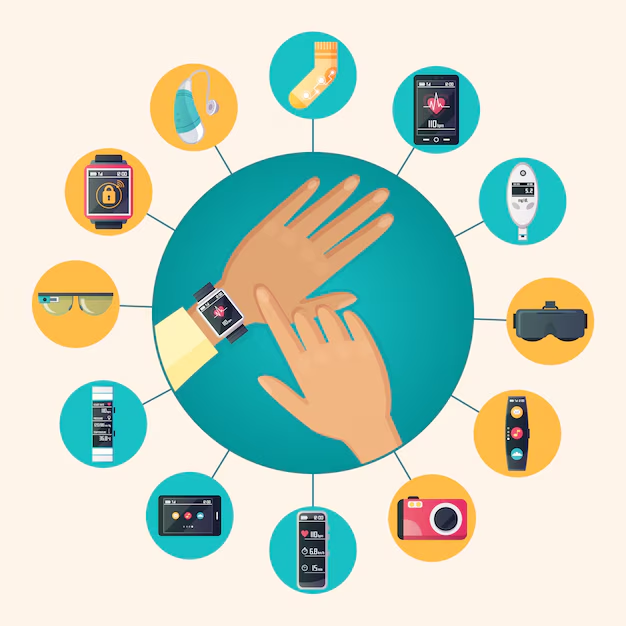
- Testing Focus: Accuracy in monitoring vital signs, including heart rate, step count, and activity levels.
- Key Tests:
- Heart Rate Monitoring: Testing devices for accuracy during various activities (e.g., resting, running, high-intensity exercise) and under different environmental conditions (e.g., temperature, humidity). Wearables must maintain high accuracy even during periods of motion or sudden changes in body activity.
- Step Count and Activity Recognition: Verifying the sensor’s ability to accurately detect and count steps or distinguish between different types of physical activity (e.g., walking vs. running).
- Battery Performance: Ensuring consistent functionality and accuracy even as battery levels decline. Wearables, especially those with continuous monitoring, must work reliably for extended periods without power failure.
- Challenges: Variability in users’ body types and physical activity patterns can affect the accuracy of sensors. The device must be tested in a wide range of scenarios to ensure accurate results for all users.
2. Diagnostic Devices (e.g., Blood Glucose Meters, Blood Pressure Monitors)
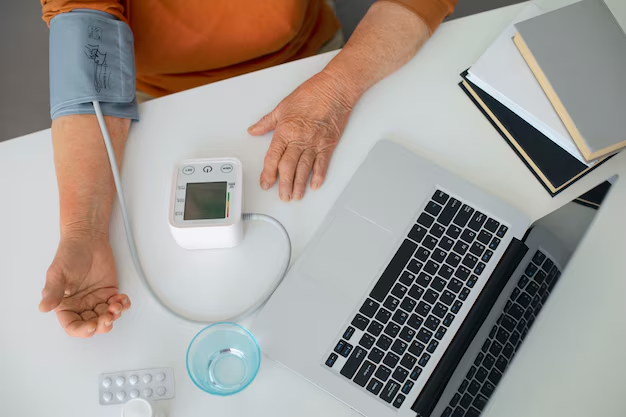
- Testing Focus: Ensuring precise measurements of critical health parameters, which are essential for accurate diagnosis and treatment.
- Key Tests:
- Calibration: Diagnostic devices must be calibrated against gold-standard reference devices or laboratory instruments to ensure that readings match clinical expectations.
- Accuracy Under Different Conditions: Testing devices like blood glucose meters and blood pressure monitors under various patient conditions (e.g., skin tone for glucose meters, stress levels for blood pressure monitors) to ensure consistent and accurate results.
- User Interface Testing: Verifying that users can easily interpret the results without making mistakes. This includes checking the display, data entry, and error messages to avoid incorrect readings.
- Challenges: For blood glucose meters, environmental factors such as temperature and humidity can affect the device’s accuracy, requiring testing across different settings.
3. Remote Monitoring Tools (e.g., Pulse Oximeters, Thermometers)
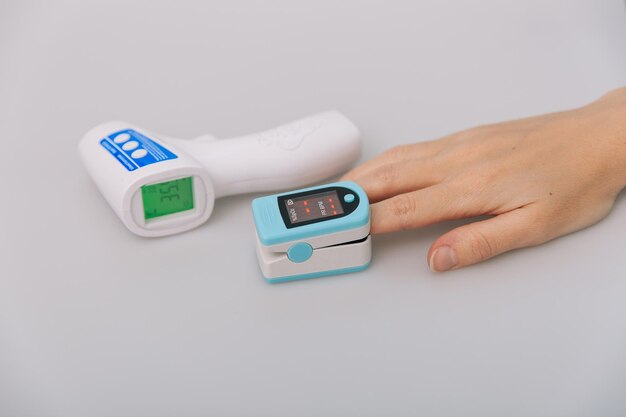
- Testing Focus: Validating the accuracy of readings taken remotely, often by non-professionals, to monitor patients’ health.
- Key Tests:
- Accuracy and Repeatability: Testing for consistent and accurate results over multiple measurements to ensure reliable remote monitoring, such as checking oxygen saturation levels with pulse oximeters or body temperature with thermometers.
- Wireless Data Transmission: Ensuring that data transmitted from these devices to healthcare providers or apps remains accurate and free from interference or corruption.
- Battery Life and Power Consumption: Given that many remote monitoring devices are battery-powered and used in home settings, it’s important to test for consistent performance throughout the battery life, ensuring that readings do not degrade as power wanes.
- Challenges: Ensuring accuracy under varying skin types (for pulse oximeters) or environmental conditions (e.g., fever detection in thermometers) and ensuring that readings remain reliable outside controlled clinic settings.
4. Wearable ECG Monitors
- Testing Focus: Validating the device’s ability to capture accurate electrocardiogram (ECG) signals, which are critical for diagnosing heart conditions.
- Key Tests:
- Signal Quality Testing: Ensuring that the ECG signals are captured clearly and without distortion, especially when the patient is in motion or under stress. This is crucial for detecting abnormal heart rhythms, such as arrhythmias.
- Wearability and Comfort: As wearables need to be worn for long periods, testing for comfort and secure placement on the body is essential to ensure that the ECG monitor can record continuously without interference.
- Data Synchronization: Testing the device’s ability to synchronize ECG data with other health monitoring systems or cloud platforms in real-time for accurate diagnosis.
- Challenges: Movement artifacts can disrupt the ECG signal, so the device must be tested for performance during physical activity and rest to ensure consistent accuracy.
5. Smart Inhalers (e.g., for Asthma or COPD)
- Testing Focus: Ensuring proper dosing and accurate tracking of medication usage.
- Key Tests:
- Dose Accuracy: Testing the inhaler’s mechanism to ensure that the correct dose of medication is dispensed with each use.
- Sensor Integration: Many smart inhalers are equipped with sensors to track usage patterns. These sensors must be tested for accuracy in recording the patient’s usage and transmitting the data to connected mobile apps or healthcare providers.
- Environmental Factors: Inhalers must be reliable in different environmental conditions (e.g., temperature changes, humidity levels) to maintain dosing accuracy and device performance.
- Challenges: Ensuring the device is both effective in delivering medication and accurate in tracking patient compliance over time.
6. Smart Insulin Pens
- Testing Focus: Ensuring accurate insulin dosage for diabetes management.
- Key Tests:
- Dosage Accuracy: Testing the accuracy of insulin delivery to ensure patients receive the correct dosage based on their specific needs.
- Bluetooth Connectivity: Many smart insulin pens connect to mobile apps for tracking and data sharing. Testing the connectivity to ensure real-time data capture and syncing is essential for proper patient monitoring.
- User Interface: Ensuring the user interface is simple, especially for patients managing their condition without medical supervision. This includes testing for ease of dose adjustment, error messages, and data tracking.
- Challenges: Testing in varying user scenarios, including patients of different ages, to ensure the device can handle different levels of dexterity and understanding.
Emerging Technologies in Test & Measurement for Digital Health
As digital health devices continue to evolve, new technologies are transforming the landscape of Test & Measurement (T&M). These innovations not only improve the accuracy and reliability of health devices but also enhance their ability to function in diverse and dynamic healthcare environments. Below are some of the emerging technologies in T&M that are shaping the future of digital health:
1. Artificial Intelligence (AI) and Machine Learning (ML) in Testing
- Overview: AI and ML are being increasingly integrated into Test & Measurement processes to automate and optimize testing procedures. These technologies can analyze large datasets to identify patterns, predict performance, and even simulate real-world conditions for devices.
- Applications:
- Predictive Maintenance: AI can predict device failures before they occur, ensuring that devices are serviced or replaced before they impact performance. For instance, wearables that track vital signs can be monitored for irregularities that may indicate potential malfunctions.
- Automated Testing: Machine learning models can be used to create automated test scripts that adjust dynamically based on test results, improving efficiency and reducing human error in the testing process.
- Data Quality Improvement: AI algorithms can be used to clean and improve the quality of health data collected by devices, filtering out noise or incorrect readings and enhancing accuracy.
- Challenges: The complexity of AI algorithms requires thorough validation to ensure they don’t introduce errors or bias, particularly in sensitive healthcare applications.
2. 5G Connectivity for Remote Health Device Testing
- Overview: The rollout of 5G networks promises faster, more reliable connectivity, which is critical for the performance of remote digital health devices that rely on constant data transfer.
- Applications:
- Real-Time Monitoring: 5G enables seamless real-time data transmission from remote health devices (e.g., ECG monitors, glucose meters) to healthcare providers, facilitating quicker diagnoses and decision-making.
- Cloud-Based Testing: Devices can be connected to cloud platforms for continuous remote testing and data validation, allowing healthcare professionals to monitor device performance in real-time.
- Large-Scale Testing: With 5G’s higher bandwidth, manufacturers can perform large-scale field testing of health devices in diverse environments, ensuring that they perform accurately under real-world conditions.
- Challenges: The widespread implementation of 5G requires significant infrastructure investments, and devices must be rigorously tested to ensure they can handle the demands of high-speed connectivity without introducing latency or data loss.
3. Internet of Medical Things (IoMT)
- Overview: The Internet of Medical Things (IoMT) refers to a network of interconnected medical devices that communicate with each other and centralized platforms, providing continuous health monitoring and data collection.
- Applications:
- Interoperability Testing: IoMT devices need to work seamlessly with each other, which requires rigorous testing of interoperability standards. This includes ensuring that devices from different manufacturers can exchange data accurately and securely.
- Data Security Testing: Given the sensitive nature of health data, IoMT devices require advanced security testing to protect against hacking or data breaches. This involves encryption, secure communication protocols, and compliance with regulatory standards such as HIPAA (Health Insurance Portability and Accountability Act).
- Network Load Testing: As the number of connected devices grows, it’s essential to ensure that the network can handle the increased traffic without compromising device performance or data accuracy.
- Challenges: The vast diversity of IoMT devices and communication protocols necessitates complex testing environments, and ensuring data privacy and security remains a primary concern.
4. Wearable Sensor Technologies
- Overview: Wearable sensors are at the forefront of digital health devices, continuously monitoring physiological signals like heart rate, respiratory rate, and even blood glucose levels.
- Applications:
- Sensor Accuracy Testing: With the proliferation of wearable health devices, testing for sensor accuracy is critical. New testing methods, such as micro-simulation of physiological signals and dynamic testing environments, help ensure that wearables provide precise measurements under various conditions.
- Environmental Stress Testing: Wearables are often used in challenging conditions, such as during exercise or extreme temperatures. New T&M methods simulate these environments to test sensor durability and accuracy.
- Biocompatibility Testing: With long-term wear, wearables must be biocompatible, meaning that the sensors and materials used don’t cause adverse reactions. Emerging technologies in biocompatibility testing focus on ensuring that wearables are safe for extended skin contact.
- Challenges: Wearable sensors must be continuously monitored for data drift, which can affect accuracy over time. This requires sophisticated algorithms and continuous testing to correct deviations.
5. Blockchain for Data Integrity and Transparency
- Overview: Blockchain technology offers a decentralized and secure way to store and transfer health data, ensuring integrity and transparency in data exchange.
- Applications:
- Data Integrity Testing: Blockchain can be used to validate the integrity of health data collected by devices, ensuring that it hasn’t been tampered with during transmission or storage.
- Audit Trails: Blockchain creates immutable records of health data transactions, which can be used to trace the history of data points and ensure compliance with regulatory requirements.
- Smart Contracts for Device Validation: Smart contracts can be used in testing to automatically trigger actions when certain conditions are met, such as a device passing specific performance thresholds.
- Challenges: Blockchain implementation requires high computational power and efficient integration with existing health systems, which can increase the complexity of device testing.
6. Augmented Reality (AR) and Virtual Reality (VR) for Simulation Testing
- Overview: AR and VR technologies are increasingly used in the development and testing of digital health devices, providing immersive environments for testing device interaction and performance.
- Applications:
- Simulated Testing Environments: AR and VR can simulate different patient conditions and environments, allowing manufacturers to test health devices under a variety of scenarios without needing actual patients or physical testing sites.
- User Interface (UI) Testing: These technologies can help test the user interface of health devices by simulating different patient interactions and ensuring that devices are easy to use, intuitive, and responsive to various actions.
- Virtual Prototyping: Before creating physical prototypes, AR and VR can be used to create virtual models of devices to assess form, function, and usability, reducing the time and cost involved in physical testing.
- Challenges: The accuracy of simulations must be high to ensure that the testing reflects real-world conditions and provides actionable insights.
7. Edge Computing for Real-Time Device Testing
- Overview: Edge computing involves processing data locally on the device or close to the data source, rather than sending it to the cloud for processing. This reduces latency and ensures real-time performance in health devices.
- Applications:
- Real-Time Data Analysis: Health devices equipped with edge computing capabilities can process data locally and instantly provide feedback, enabling real-time decision-making in critical health situations.
- Latency Testing: Testing devices with edge computing focuses on minimizing latency, ensuring that the device provides immediate and accurate results without delay.
- Data Filtering and Preprocessing: Devices can filter and preprocess data at the edge to reduce the amount of data transmitted to cloud servers, ensuring efficient use of bandwidth and improving device performance.
- Challenges: Testing edge devices requires simulating various network conditions to ensure performance consistency and reliability in different environments.
Conclusion
The rapid advancement of digital health technologies has brought significant improvements in patient care, enabling more personalized and efficient healthcare solutions. However, these innovations come with the need for rigorous and continuous testing to ensure that the devices perform accurately, reliably, and safely. Test & Measurement (T&M) plays a critical role in this process, ensuring that health devices meet the highest standards of quality and compliance.
Emerging technologies such as AI and ML, 5G connectivity, IoMT, blockchain, and edge computing are revolutionizing the way digital health devices are tested. These technologies not only streamline the testing process but also enhance the capabilities of devices, enabling real-time monitoring, predictive maintenance, and secure data handling. As digital health devices become more integrated into everyday healthcare practices, the importance of effective T&M strategies will only grow.
In conclusion, embracing these emerging technologies in Test & Measurement will be essential for the continued success and evolution of digital health devices. Manufacturers and healthcare providers must stay ahead of technological advancements and continuously refine their testing methodologies to ensure that digital health solutions remain accurate, secure, and impactful in improving patient outcomes and overall healthcare efficiency.

